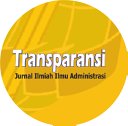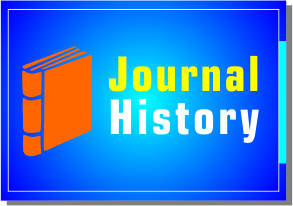Economic Value Added (Eva) Sebagai Pengukuran Kinerja Keuangan pada Industri Telekomunikasi Suatu Analisis Empirik
DOI:
https://doi.org/10.31334/trans.v1i1.142Keywords:
Economic Value Added, KinerjaAbstract
The company's performance has always been measured based on financial ratios for a certain period. Measurement based on financial ratios is very dependent on the accounting treatment used in the preparation of corporate financial statements. The purpose of a company that is only oriented to the achievement of profits as big as when it is no longer relevant today. Therefore the responsibility of the company not only to the shareholders, but to all stakeholders. Performance appraisal of a company is very important that the assessment process must be in line with the effectiveness and efficiency in achieving competitive advantage in the business world. Since the last ten years has developed a new approach in assessing the financial performance of companies known as Economic Value Added (EVA). EVA model comes from the concept of capital cost (cost of capital), which is the risk faced by the company in making investments. The concept of Economic Value Added (EVA) as an alternative to performance measurement based on the value (EVA) is an approach in assessing the performance of the company by paying fair attention to the expectations of funders or investors. EVA is the profit left behind after deducting the capital cost (cost of capital) invested to generate the profit. Positive EVA values can be interpreted that the company's management has created value (creating value). Conversely, if the value of negative EVA means that there is no economic value added into the company. The goal to be achieved by the authors in this study is To determine the financial performance of Telecommunications Company in review of Economic Value Edded (EVA). And To know Which Telecommunication Company that provides better economic value.
This research used qualitative analysis. The qualitative analysis method is used to interpret and analyze the result of EVA calculation, that is to measure the added value of the company by calculating all capital cost, either the capital contribution from the shareholder or from the loan, or the risk faced by the company in making the investment. To measure the company's performance required financial report data in the form of income statement and balance sheet, JCI, stock price and SBI rate data. Data Collection Procedure is the data of financial statements of companies from the telecommunications industry listed on the Indonesia Stock Exchange in the period 2005-2009, obtained from www.idx.co.id. Monthly monthly stock price index (IHSG) monthly from 2005-2009, interest rate of 12 month time deposit from 2005-2009 and stock price data used since 2005.
The results show that only PT Telekomunikasi Indonesia Tbk alone can generate positive EVA, while PT Indosat Tbk and PT Bakrie Telecom Tbk generate negative EVA. Negative EVA values are caused by several factors, among others: because of the significant increase in fuel prices, followed by inflation and rising interest rates affecting people's purchasing power, rising capital costs and operational costs of both companies, the impact of the 2008 global financial crisis that affected on declining stock value and the impact of tariff war between telecommunication companies where telephone tariffs are lower and the decline in long distance call rates affects the telecommunication company's operating revenues.
References
Arifin, Johar Cara Cerdas Menilai Kinerja Perusahaan Berbasis Komputer: Elek Media Komputindo
Asnawi, Said Kelana & Wijaya, Chandra. (2005). Riset Keuangan : Pengujian-pengujian empiris : Gramedia Pustaka Utama.
DeMello, Jim, (2006), Kasus-kasus Keuangan, Edisi 2, Jakarta: Salemba Empat. Febrian, Erie & Rr. Iramani. (2005). Financial Value added Suatu Paradigma Dalam Pengukuran Kinerja dan Nilai Tambah Perusahaan.Jurnal Ekonomi Akuntansi, Fakultas Ekonomi-Universitas Kristen Petra
Harahap, Sofyan Syafri. (2010). Analisis Kritis atas Laporan Keuangan, Jakarta : Rajawali Pers.
Helfert, A Erich, (1991). Analisis Laporan Keuangan, Jakarta, Erlangga.
Panggabean, Raja Lambas J(2005), Analisis Perbandingan Korelasi EVA dan ROE terhadap Harga Saham LQ 45 di Bursa Efek Jakarta, Jurnal Manajemen dan Bisnis Sriwijaya Vol.3 No.5 Juni 2005.
Munawir. S. (2002). Analisa Laporan Keuangan : Penerbit Liberty, Yogyakarta. Pradhono, Christiawan, Jogi Yulis. Pengaruh Economic Value Added, Residual Income,
Earnings dan Arus Kas Operasi Terhadap Return Yang Diterima Oleh Pemegang Saham. Jurnal Ekonomi Akuntansi, fakultas Ekonomi, Univ. Kristen Petra.
Sasongko, Noer & Walandari, Nila. (2006). Pengaruh EVA dan Rasio-rasio Profitabilitas Terhadap Harga Saham, Fakultas Ekonomi Universitas Muhammadiyah Surakarta.
Sefcho Rizal, MM Ratna Sari, Analisis Economic Value Added (EVA) Dalam Hubungannya Dengan Harga Saham Pada Perusahaan Jasa Transportasi Yang Listing di Bursa Efek Jakarta Periode 2003-2005, ejournal Unud.ac.id
Taufiq, Pengaruh PendekatanTradisional Accounting Dan Economic Value Added Terhadap Stock Return Perusahaan Sektor Perbankan Di PT Bursa Efek Jakarta. Jurnal Manajemen dan Bisnis Sriwijaya Vol.5 No.10 Juni 2007
Tunggal, Amin Wijaya. (2008). Pengantar Konsep Economic Value Added (EVA) dan Value-Based Management (VBM): Harvindo
Utomo, Lisa Linawati.(1999). Economic Value Added Sebagai Ukuran Keberhasilan Kinerja Manajemen Perusahaan, Jurnal Akuntansi dan Keuangan Vol. 1, No.1, Mei 1999 : 28-42, Universitas Kristen Petra
Young, David S dan O’Byrne, Stephen F. (2001). EVA dan Manajemen berdasarkan Nilai ::Penerbit Salemba Empat, Jakarta. www.idx.co.id
Downloads
Published
Issue
Section
License

This work is licensed under a Creative Commons Attribution-ShareAlike 4.0 International License
Please find the rights and licenses in Transparansi : Jurnal Ilmiah Ilmu Administrasi By submitting the article/manuscript of the article, the author(s) agree with this policy. No specific document sign-off is required.
- License
The commercial use of the article will be governed by the Creative Commons Attribution license as currently displayed on Creative Commons Attribution-ShareAlike 4.0 International License.
2. Author(s)' Warranties
The author warrants that the article is original, written by stated author(s), has not been published before, contains no unlawful statements, does not infringe the rights of others, is subject to copyright that is vested exclusively in the author and free of any third party rights, and that any necessary written permissions to quote from other sources have been obtained by the author(s).
3. User Rights
Transparansi : Jurnal Ilmiah Ilmu Administrasi spirit is to disseminate articles published are as free as possible. Under the Creative Commons license, Transparansi : Jurnal Ilmiah Ilmu Administrasi permits users to copy, distribute, display, and perform the work for non-commercial purposes only. Users will also need to attribute authors and Transparansi : Jurnal Ilmiah Ilmu Administrasi on distributing works in the journal and other media of publications.
4. Co-Authorship
If the article was jointly prepared by more than one author, any authors submitting the manuscript warrants that he/she has been authorized by all co-authors to be agreed on this copyright and license notice (agreement) on their behalf, and agrees to inform his/her co-authors of the terms of this policy. Transparansi : Jurnal Ilmiah Ilmu Administrasi will not be held liable for anything that may arise due to the author(s) internal dispute. Transparansi : Jurnal Ilmiah Ilmu Administrasi will only communicate with the corresponding author.
5. Miscellaneous
Transparansi : Jurnal Ilmiah Ilmu Administrasi will publish the article (or have it published) in the journal if the article’s editorial process is successfully completed. Transparansi : Jurnal Ilmiah Ilmu Administrasi editors may modify the article to a style of punctuation, spelling, capitalization, referencing and usage that deems appropriate. The author acknowledges that the article may be published so that it will be publicly accessible and such access will be free of charge for the readers as mentioned in point 3.
Every accepted manuscript should be accompanied by "Copyright Transfer Agreement"prior to the article publication.











